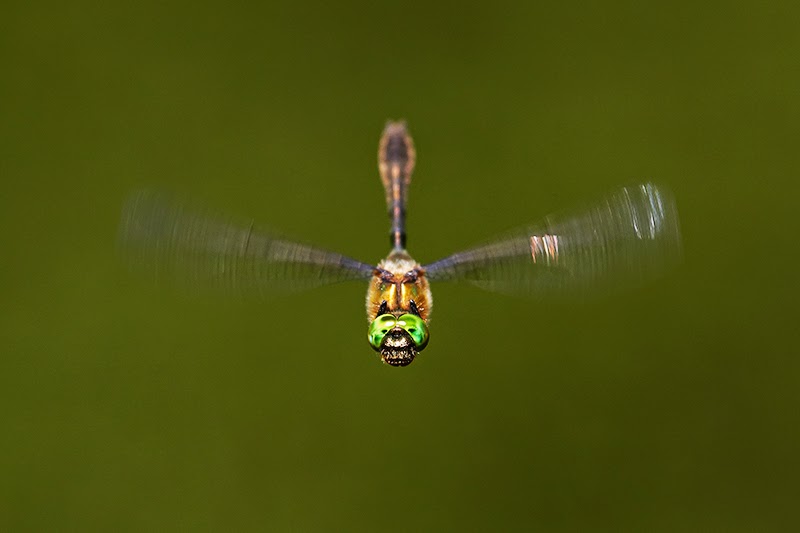Emperors are now a common sight across our ponds and lakes, with adults seen at Tywell, Ditchford and Yardley Chase. At Ditchford, I found loads of Emperor Exuviae and one recently emerged female who had died after completing emergence. I thought at first she was waiting to fly, but on closer inspection I could see fluid dripping from her abdomen. After nudging a few times, I realised she was dead. There were several males hawking across their territories, and I managed a few decent in flight shots. A handful of Brown Hawker exuviae were also present.
At Ditchford there were many blue form female Common Blue Damselflies in amoung the thousands of males. This colour form is rare in the early spring, but seems to become more common as the season progresses. The usual form is the pale yellow-brown. Common Blues have two phases of emergence, in early spring for larvae that are two years old and then mid summer for last year's larvae and I have often wondered if this contributes to the different numbers? Here is a sot I have been trying to get for a while now, showing both male and blue form female mating.
At Yardley Chase on Tuesday I found many Southern Hawker exuviae but no adults. Downy Emeralds were showing well.
The Whitestones Ponds at Twywell were buzzing with Broad-bodied Chasers, with over 12 adults across the three ponds. A couple of females appeared, were promptly mated and began ovipositing. They always seem to do it in photographically poor spots though!
John Windust reports the first Ruddy Darter at Summer Leys on 12 June.




